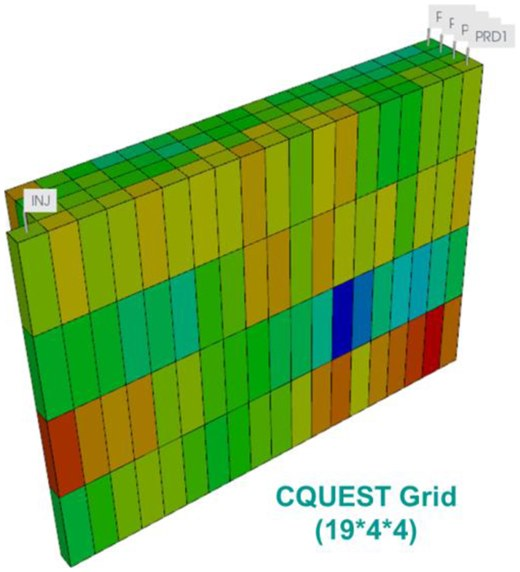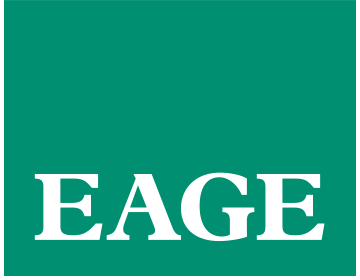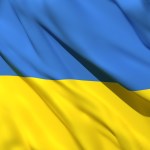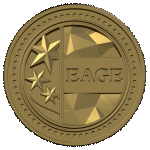As a group of EAGE members and volunteers, the EAGE A.I. Committee is dedicated to helping you navigate the digital world and finding the bits that are most relevant to geoscientists. This month’s newsletter is summarizing our key machine learning and artificial intelligence takeaways from the EAGE Annual Convention, held in Vienna in June. We hope you find some interesting reflections and links to technical contributions that we as a Committee felt were important to share.
You are welcome to join EAGE or renew your membership to support the work of the EAGE A.I. Community and access all the benefits offered by the Association.
EAGE Membership Benefits: Join or Renew
Curious to know all EAGE is doing for the digital transformation?
Visit the EAGE Digitalization Hub
![]()
EAGE Annual Hackathon – Natural Language Processing
Summary by: Lukas Mosser
![]()
What?
A two day hackathon was run during the pre-conference workshops looking at how we can use language processing to improve interactions with geoscience and engineering information. With some great work from the hackathon facilitators, all of the submitted abstracts from this year’s EAGE Annual were the text body that the teams had to hack on. Using some of the Large Language Models (LLMs) that have come out this year (dominated by OpenAI’s ChatGPT), the teams were able to all dig into challenges related to asking for insight from a bunch of text.
🚢 GeoExplorers – This team presented an easy-to-use open source interface to all your structured and unstructured data! Github:Link to Github code This team won best in show with an awesome app that you point at a folder of data, and you can ask it what is in those folders in a chatbot interface! Really cool and would actually be useful for many.
📊 Abstracters – This team analysed this years almost 900 EAGE Annual abstracts and showed us the power of data analytics on documents – who is doing what, the hot topics in geoscience, and how to become better authors! Github: Link to Github Code This team won the audience award voted by the other teams. This team also came from zero coding background and were amazing how easy it was to learn and apply in under 24 hours!
📅 AskAetos – This team created #AskJeeves for the EAGE Annual agenda. Type a topic or question you want and get out your own personalized agenda and paper suggestions. (see example below in the “Agenda Builder App”)
🏔 GeoDude – This team showed us the power of supplementing OpenAI ChatGPT and opensource LLMs with contextual knowledge and when fine-tuning can help. Great github and implementation to check out: Link to Github Code
![]()
Why this is useful?
There is value in understanding how well we can customize these LLMs for very specific problems – especially where a certain set of scientific nomenclature is used.  In general, the hackathon projects showed that there is great potential for LLMs for every day matters in the energy industry (help me schedule something, help me know more about this basin..etc). Who knows – maybe we will see improvements to the EAGE events app using some LLMs?!
In general, the hackathon projects showed that there is great potential for LLMs for every day matters in the energy industry (help me schedule something, help me know more about this basin..etc). Who knows – maybe we will see improvements to the EAGE events app using some LLMs?!
Most of the code is available open source and free to use in the links above!
![]()
EAGE Annual AI Dedicated Session: Going Big! Scaling Machine Learning in Geoscience/Engineering Workflows
Summary by: Ashley Russell
![]()
What?
One of the AI Special Interest Group’s responsibilities at EAGE this year was planning and hosting a specific dedicated session on machine learning operations – or in other words the ability to maintain machine learning models over time and through user feedback. I gave a small introduction on what MLOps is and why we should care about it – maintaining machine learning models in use across different people, different assets, different geology or facilities is new, and challenging for us, with very little Google-like capability or competence in our companies, but it is one of the ways we can scale data science across with few data scientists.
We had 4 technical talks and a panel of experts led us through a discussion.
Some key takeaways:
- The technical presenters showed examples with well log data (various types of prediction) and with image classification. But one keen person in the audience mentioned that seismic was not mentioned. Yes, we are doing data science with various seismic interpretation processes, but the general agreement is that we are not as mature on MLOps with seismic yet – the format of the data is not recognized by the cloud ML services that many of us are using.
- It appears that full automation in machine learning is not what we want. Again a general agreement is that a human in the loop is important on top of automated CI/CD to confirm that the model is redeployed with the right prediction quality.
- Feedback from the users of predictions is the most important part of MLOps to capture and use – otherwise you have no reason to improve or change. It is also perhaps the most difficult part to implement. So the implementation of data science and the application of it to improve our work days are very dependent on engaged colleagues!
![]() Why this is useful?
Why this is useful?
This is a complex system and by sharing different perspectives and solutions on operating machine learning models and incorporating feedback allows us to choose more wisely going forward.
![]()
EAGE Annual Valuable Technical Presentation: “A Machine Learning Enabled Workflow for Efficient Channel Detection from Seismic Data” – Dr. Graham Baines, Halliburton
Summary by: Ashley Russell
![]() What?
What?
We can use supervised machine learning in commercial software today to for example extract salt, or certain horizons, but this case was exploring how to automatically find
channel bodies in seismic.  The typical Machine Learning workflow today is that you extract various section of seismic and an interpreter manually “paints” over the channels to mark what is channel and what is not to set up a training data set – a lot of time to do this! This author tried using several automated processes to do the “painting” automatically, and then all the interpreter needs to do is confirm – yes it is a channel or no it is not. Then this is used as the training data for a ml algorithm to search for channels in un-interpreted seismic. They showed two methods – first with an open source python code from remote sensing to extract river systems from satellite images (image to right). It was not successful when applied to seismic spectral decomp slices. The second method using a segmentation algorithm such as SegmentAnything from Meta was far more successful. You can read the abstract here if you are an EAGE member.
The typical Machine Learning workflow today is that you extract various section of seismic and an interpreter manually “paints” over the channels to mark what is channel and what is not to set up a training data set – a lot of time to do this! This author tried using several automated processes to do the “painting” automatically, and then all the interpreter needs to do is confirm – yes it is a channel or no it is not. Then this is used as the training data for a ml algorithm to search for channels in un-interpreted seismic. They showed two methods – first with an open source python code from remote sensing to extract river systems from satellite images (image to right). It was not successful when applied to seismic spectral decomp slices. The second method using a segmentation algorithm such as SegmentAnything from Meta was far more successful. You can read the abstract here if you are an EAGE member.
![]() Why this is useful?
Why this is useful?
This talk was addressing a fundamental problem in any supervised classification machine learning workflow. Someone has to spend the time to label the classes in the training data – which is time intensive and often very subjective. The ease of using a segmentation algorithm to “mosaic” seismic is a clever way to make it easy to do labeling.
Image source: isikdogan/rivamap
![]()
EAGE Annual Valuable Presentation: “AI Grid Design for Fast Reservoir Simulation” – Dr. Long Nghiem, CMP
Summary by: Ashley Russell
![]() What?
What?
I am not a reservoir engineer, but I am aware of the challenges that are arising with computing costs on cloud (for example) to do flow simulation. This was a very popular presentation where Dr. Nghiem presented a new method for flow simulation that reduces computational time up up to 443x! It works by simplifying the 3D simulation model in several ways.  First they perform a feature reduction to take all the parameters in the grid cells and reduce them to only 3 factors. Then they only simulate in a “strip” of grid cells between injector and producer pairs. This method is still in development, but they shared some benchmarks that the history matched production was different by 1.3% when compared with a full 3D simulation. Today they have only tested waterflood but the results look very promising!
First they perform a feature reduction to take all the parameters in the grid cells and reduce them to only 3 factors. Then they only simulate in a “strip” of grid cells between injector and producer pairs. This method is still in development, but they shared some benchmarks that the history matched production was different by 1.3% when compared with a full 3D simulation. Today they have only tested waterflood but the results look very promising!
You can read the abstract here if you are an EAGE member. The image shown here is from the abstract.
![]() Why this is useful?
Why this is useful?
There was a “food for thought” question from a student in the audience who asked “my textbooks on simulation are 30 years old – how are we using new data science methods to make it better?” Clearly the research that Dg. Nghiem is presenting here is on how do we do a step change to bring about the future of reservoir simulation.
![]()
This newsletter is edited by the EAGE A.I. Committee.
| Name | Company / Institution | Country |
|---|---|---|
| Anna Dubovik | WAIW | United Arab Emirates |
| Jan H. van de Mortel | Independent | Netherlands |
| Jing Sun | TU Delft | Netherlands |
| Julio Cárdenas | Géolithe | France |
| George Ghon | Capgemini | Norway |
| Lukas Mosser | Aker BP | Norway |
| Oleg Ovcharenko | NVIDIA | United Arab Emirates |
| Nicole Grobys | DGMK | Germany |
| Roderick Perez | OMV | Austria |
| Surender Manral | Schlumberger | Norway |
| Yohanes Nuwara | Aker BP | Norway |






